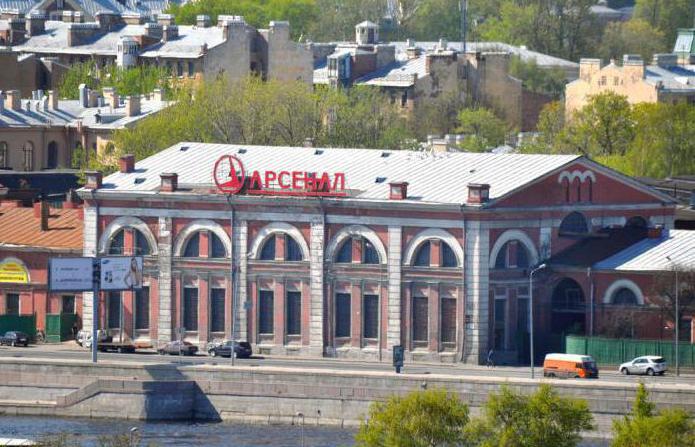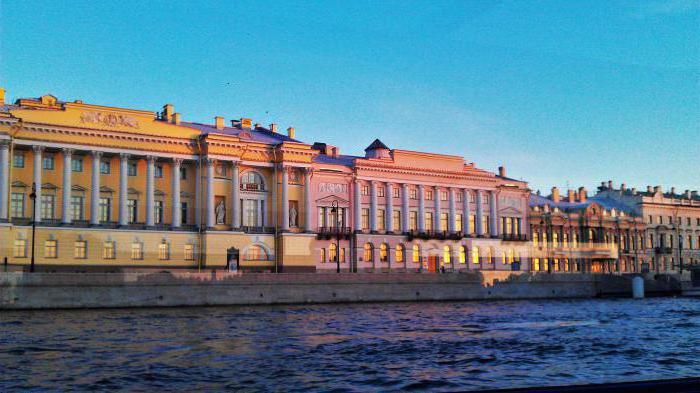Founded at the direction of Peter the Great on October 151711 St. Petersburg plant "Arsenal" is an integral part of the military history of the state. For more than three centuries, the company is renowned for its advanced high-tech production of the latest weapons systems for the army and navy, with high technical data with a high degree of reliability in operation. Continuing the tradition of Peter's gunners, the Arsenalians produce the latest, unparalleled models of weapons. Significant achievements of the team and in space exploration.

Historical Chronicle
1711By decree of Tsar Peter I, the construction of the Cannon Foundry - the foundations of the future Arsenal plant in St. Petersburg - was started. His tasks included the manufacture of ship and field guns, the production of ammunition, gunpowder. A little later, the "Petrovsky" metallurgists took up artistic casting, having done a lot to decorate the young Russian capital.
Subsequent centuries in his shops poured the best guns of Russia. The national artillery design center was established here, where the latest technologies, ideas, and bold projects were developed and implemented.

New era
With the fall of the tsarist regime, the value of the enterprisenot only did not fall, but also increased significantly. For example, the first Soviet cannon with rifled barrels were created on it. Significant changes occurred in 1937. Two design bureaus were established at the Arsenal plant in St. Petersburg: artillery under the leadership of Lev Izrailevich Gorlitsky and mortar under the leadership of Boris Ivanovich Shavyrin, who were part of the technical department of the factory (head Roman Anisimovich Turkov). In 1940, the State Union Plant No. 7 was named after MV Frunze. A design bureau headed by Nikolai Petrovich Antonov was created at the enterprise.
In the Great Patriotic War, despite the blockade,factory workers have created the best (according to experts) domestic anti-tank gun model BS-3. Let out here and "Katyusha". Among the products were machine guns, mortars, protective shells.
Post-war development
In 1949, on the basis of the plant "Arsenal"(St. Petersburg) formed the Central Design Bureau number 7, which was entrusted with the design work on the naval automatic anti-aircraft artillery and guns for fortified areas. Nikolai Petrovich Antonov was appointed chief designer of the TsKB-7.
In 1953 State Union Plant No. 7 named M.V. Frunze came under the jurisdiction of the USSR Ministry of Defense Industry. Pyotr Aleksandrovich Tyurin was appointed head of TsKB-7. After 10 years, the company was transferred to the Ministry of General Engineering.
In 1969, the plant structure was divided into four distinct areas:
- rocket (chief designer - P. A. Tyurin);
- space (chief designer - V.F. Kalabin);
- artillery (chief designer - E. I. Malishevsky);
- common industrial (chief designer - S. E. Krivosheev).
A. I. Arefyev was appointed to be responsible for the development and introduction of new technology.
Since the beginning of the 70s, Arsenal has mastered the issue absolutelynew products for themselves - spacecraft (SC) for various purposes. These were tracking satellites, superior in characteristics to all Western counterparts. Since the 80s, the SC of the Cobalt series has been produced.
In the 90s, the machine-building plant Arsenal in St. Petersburg was incorporated. Despite the transition to market rails, the company remains one of the drivers of the defense industry.

Space exploration
In 1964, the Arsenal plant was commissioned to manufactureseveral types of devices for landing lunar modules on the Earth’s satellite, including manned vehicles. A number of projects have been implemented, including the landing of several moon rovers. Thus, the Arsenal plant in St. Petersburg, in addition to the development of artillery systems, began to produce aerospace equipment.
By 1969, part of the capacity of the enterprise wasreoriented to the needs of the space industry, production was reconstructed, unique equipment and machine tools were installed. For several decades, space vehicles have been developed here, the characteristics and purpose of which are hidden under the top of secrecy. They are intended for military use, intelligence, communications, research, geodesy. Arsenal has repeatedly participated in international projects in cooperation with foreign partners. Workers, engineers and designers are working in this sector, who can be confidently called innovators and scientists with a capital letter.

Production
Arsenal is involved in the design and production of many types of weapons, apparatus, industrial equipment. The pride of the factory are:
- Shipborne automatic artillery and rocket launchers: SM-21-ZIF, AK-725, AK-726, AK-100, AK-130, ZIF-75, ZIF-101, PK-16, ZIF-121, ZIF-122.
- Solid-propellant rocket engines, ballistic missiles, combat missile systems: RT-15, RT-2P, R-31.
- Space equipment, spacecraft and space complexes: spacecraft US-A with nuclear power plant Buk, spacecraft US-PU, spacecraft US-PU with NA Konus-A, spacecraft US-AM with NPU Buk-3, spacecraft Plasma-A "with NPU" Topaz ".
Today, the company looks with confidence infuture. A number of important projects are hidden behind the secrecy stamp, but publicly available information is enough to appreciate the merits of a highly professional team. The address of the plant "Arsenal" in St. Petersburg: 195009, St. Petersburg, st. Komsomol, K. 1-3.












